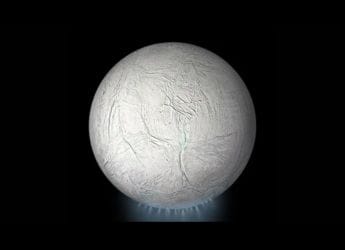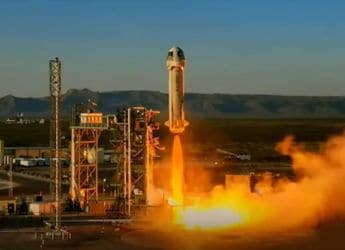- Home
- Science
- Science News
- Scientists Discover Hidden Mantle Layer Beneath the Himalayas Challenging Century Old Theory
Scientists Discover Hidden Mantle Layer Beneath the Himalayas Challenging Century-Old Theory
For a century, scientists thought the Himalayas rested on double-thick crust.

Photo Credit: Unsplash/Bisesh Gurung
New study finds hidden mantle layer in Himalayas, challenging old tectonic model, altering quake risk
For decades, geologists believed the Himalayas rested on a double-thick crust. A 1924 map by geologist Émile Argand depicted two continental crust layers 45–50 miles deep under the range. In this model, the Indian plate slid far under Asia, stacking layers so that about 70–80 km of crust support the mountains. Computer models now suggest otherwise: they show blobs of mantle rock wedging between the two crusts — meaning a slice of dense mantle lies between India's crust and Asia's crust beneath the Himalayas. This rigid mantle layer adds strength to the mountain roots and helps buoy the range.
Revising a Century-Old View
According to the new paper, published in the journal Tectonics, the Argand model assumed only crust layers doubled to carry the range. But at depths of ~40 km rock becomes ductile “like yogurt,” undermining that simple stack. Geoscientists noticed many oddities that didn't fit the crust-stack idea. In fact, earlier evidence had long hinted that Argand's model was flawed.
The new mantle-sandwich model resolves those puzzles and matches seismic and geological data better. Study co-author Simone Pilia notes that observations which “seemed to be enigmatic” now make sense under the crust–mantle–crust picture.
Implications for Tectonics and Seismic Risk
A hidden mantle slab changes our view of Himalayan tectonics. It means the thick Tibetan crust floats on a stronger base, which could affect how stress builds along Asia's fault zone with India. The collision still pushes the Himalayas up about 1 cm per year, but that motion also drives dangerous earthquakes.
The Himalayan region is one of the world's most seismically active areas. Understanding the true structure of the crust and mantle is key to better models of tectonic forces and earthquake hazards in this region.
Get your daily dose of tech news, reviews, and insights, in under 80 characters on Gadgets 360 Turbo. Connect with fellow tech lovers on our Forum. Follow us on X, Facebook, WhatsApp, Threads and Google News for instant updates. Catch all the action on our YouTube channel.
Related Stories
- Samsung Galaxy Unpacked 2025
- ChatGPT
- Redmi Note 14 Pro+
- iPhone 16
- Apple Vision Pro
- Oneplus 12
- OnePlus Nord CE 3 Lite 5G
- iPhone 13
- Xiaomi 14 Pro
- Oppo Find N3
- Tecno Spark Go (2023)
- Realme V30
- Best Phones Under 25000
- Samsung Galaxy S24 Series
- Cryptocurrency
- iQoo 12
- Samsung Galaxy S24 Ultra
- Giottus
- Samsung Galaxy Z Flip 5
- Apple 'Scary Fast'
- Housefull 5
- GoPro Hero 12 Black Review
- Invincible Season 2
- JioGlass
- HD Ready TV
- Laptop Under 50000
- Smartwatch Under 10000
- Latest Mobile Phones
- Compare Phones
- Realme P4x 5G
- OnePlus Ace 6T
- OPPO A6x 5G
- Samsung Galaxy Z TriFold
- Poco F8 Ultra
- Poco F8 Pro
- Huawei Mate 80 RS Master Edition
- Huawei Mate 80 Pro Max
- Asus ProArt P16
- MacBook Pro 14-inch (M5, 2025)
- Poco Pad M1
- Poco Pad X1
- Just Corseca Skywatch Pro
- Honor Watch X5
- Acerpure Nitro Z Series 100-inch QLED TV
- Samsung 43 Inch LED Ultra HD (4K) Smart TV (UA43UE81AFULXL)
- Asus ROG Ally
- Nintendo Switch Lite
- Haier 1.6 Ton 5 Star Inverter Split AC (HSU19G-MZAID5BN-INV)
- Haier 1.6 Ton 5 Star Inverter Split AC (HSU19G-MZAIM5BN-INV)















